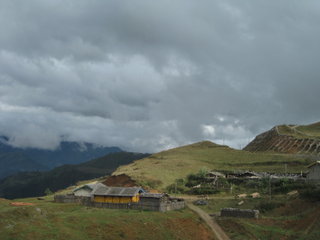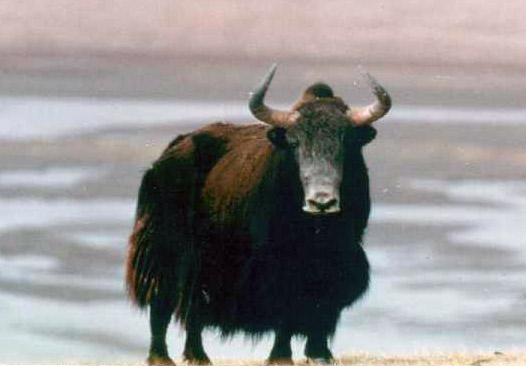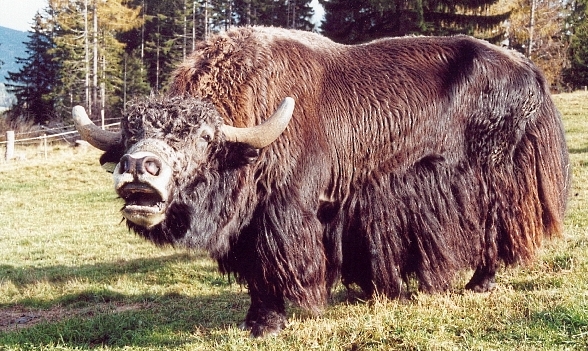 Adaptation
Adaptation
The yak makes its habitat in very harsh conditions with
elevations between 6,000 and 16,000 feet about sea level, so the
yak must be extremely well adapted to live in such an extreme
environment.
The Himalayas and other highly elevated areas are not very
densely populated, even by humans because it takes so much to
survive there. While this means that yaks do not have a lot of
competition or predators, it also means that yaks have to work
hard just to survive. Yaks have special adaptations to help them
excel at high elevations.
The yak's tongue is extremely rough, making it
well adapted for scraping mosses and lichens off of rocks and
other tough surfaces.
Like other bovines, the yak has a rumen. This is a part of the
stomach that partially digests food and then
used as cud. Unlike the
common cow, yaks have a larger rumen so
that they can take more food in and let it sit in the rumen for
a longer period of time. This is extremely necessary to the
lifestyle of the yak because they diet on very nutrient poor
vegetation and a digestive system that can absorb as much of the
nutrients taken in is preferred. The yak also has a longer
intestine because of its diet than a carnivore. This allows the
yak to get every nutrient out of its food before expelling the
excess as waste. Because of the severe habitat,
a yak needs a lot of nutrients to keep moving, to keep warm, and
to get oxygen to all of its cells. Efficient nutrient intake is
a must. One of the most common ruminants is the
goat, take a look at the site to see the similarities!
Another quality that makes the yak different from average cattle
is that yaks have larger lungs
and heart and a larger blood count.
 This allows
for very successful blood flow at very cold temperatures,
efficient oxygen exchange, and
keeps a yak's body temperature up.
This allows
for very successful blood flow at very cold temperatures,
efficient oxygen exchange, and
keeps a yak's body temperature up.
As can be seen in many pictures, the yak appears to be extremely
hairy. This coarse coat helps keep the yak warm
and helps prevent the desiccation of water and keep nutrients in.
The habitat of the yak is extremely rocky and of various
elevations. The broad hooves of the yak allow
it to travel across its habitat without falling and allow it to
reach food sources.
The yak also needs broad hooves to migrate to
lower elevations with more vegetation during the coldest parts
of winter. This is an adaptation that allows the yak to survive
during the most extreme temperatures, and have a food source
when otherwise they would starve.
Check out the habitat that causes most
of these adaptations. Continue on to see the
nutrition that the yak uses to
survive.
